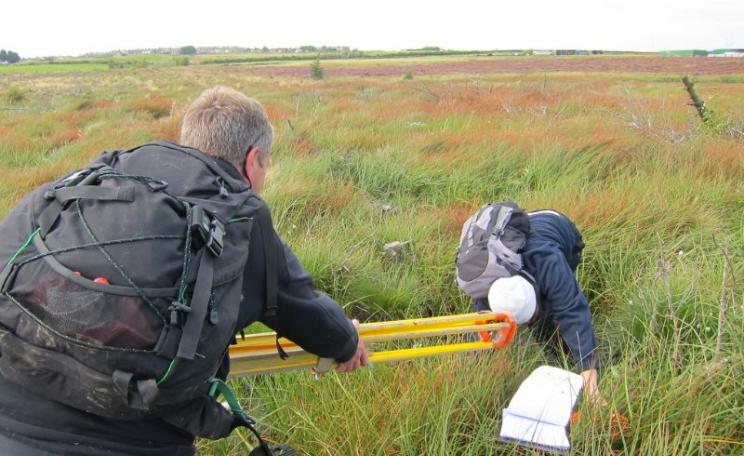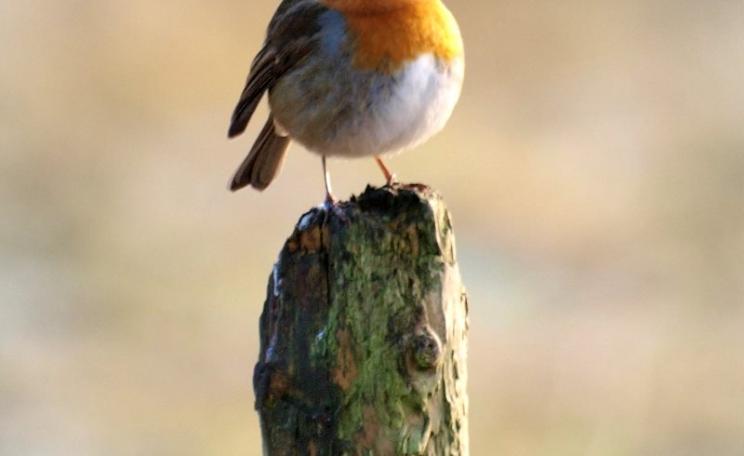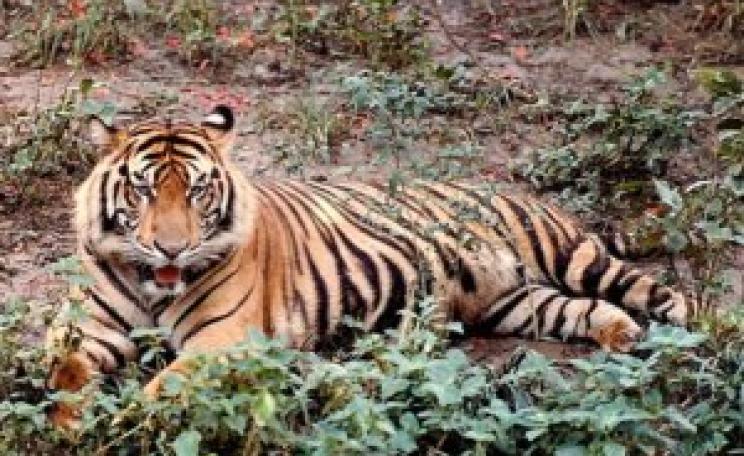Big Ben strikes 4.45am and a juvenile peregrine falcon sweeps into the air from the clock tower, a small anchor shape silhouetted against a just-lightening city sky. The bird flies over to the north side of the Palace of Westminster and settles among the gargoyles, blending in perfectly. Dave Morrison, lifelong Londoner and peregrine obsessive, focuses his telescope onto the tower.
The young female, identifiable by her flight and size, sits calmly on the well-known structure that has been her home for the past few weeks. Her territory, shared with her parents and three siblings, is an exclusive area beside the Thames, with the Houses of Parliament and Westminster Abbey at its centre.
Back in the 1960s, the peregrine falcon was almost extinct in Britain. Killed during the Second World War to stop them preying on messenger pigeons, peregrines then suffered the devastating impact of the pesticide DDT. But new levels of protection and restrictions on pesticide use have meant this stunning bird of prey, acknowledged as one of the fastest in the world, has now recovered.
Perhaps surprisingly, its recovery is best illustrated by the fact that numbers are thriving in the middle of London - more than 20 pairs are known to be living within a 20-mile radius of St Paul's Cathedral.
Traditionally associated with remote mountain crags, the peregrine loves London for its concrete canyons and cliff faces of brick and mortar. Tower blocks are perfect places to nest and the river is an excellent commuting route.
 Bird-spotting
Bird-spotting
At 5.30am an adult female falcon flies in carrying a limp feral pigeon. She lands on Parliament and begins to pluck her prey. Pigeons are another reason London is so appealing to peregrines, but they aren't as easy a target as you may think. Alert to predators, the birds fly within the protection of large groups, dropping low and hugging the rooftops, and making what Dave calls sudden 'jinking' movements. Peregrines aren't guaranteed a kill - it can sometimes take several hunts before they're successful - but ultimately they are London's top avian predator. Pigeons are rich pickings and keep the falcons well fed.
Peregrines take smaller birds in their talons as they fly, though it is their powerful beaks that will deliver the death blow. During spectacular 1,000ft swoops, they can reach speeds of 150mph. When courting, they perform impressive aerial acrobatics and pass food gifts in flight. Beautiful, bold birds, then - ones with which it is easy to become obsessed.
Dave is a Barking boy, and a steel-fixer by trade. He's been entranced by the peregrine falcon since seeing one while he was on a job. Work often involves being high up on building sites and bird-watching opportunities arise often in such spots. His enthusiasm is infectious and his once-unconvinced work colleagues are now also guilty of sky-watching.
For the past 10 years Dave has been monitoring London's peregrines, and his interest and expertise has grown to the point where he's now consulted by landowners who find they have falcons on their buildings.
Peregrines are a Schedule One listed species, which means they have the highest protection possible under wildlife law. You have obligations if a pair decides to nest on your property, which Dave is able to advise upon, as well as offering services such as putting up custom-built nesting boxes and platforms.
It may not seem like much, but simply keeping detailed records of peregrine numbers, their whereabouts and behaviour, is really valuable. How else would we know the birds were on the increase in the city? The wildlife data collected by nature enthusiasts like Dave is extremely important in painting a picture of how species are faring, both locally and nationally.
For some, having peregrines can be disruptive, as it means areas become out of bounds during the breeding season. For others the birds are very welcome, mostly because of the peregrine's penchant for the un-loved pigeon. Staff at the Houses of Parliament are rather pleased with theirs, and a plush nest box is planned for next year. The current pair have been christened Charlie and Augustus, and people who work in the building rely on Dave for regular updates.
A day in the life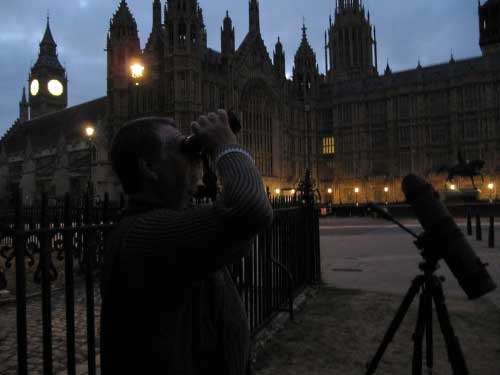
London is a different place at dawn. Inexperienced at such early starts, I go to bed late and get up just a few hours later feeling pained. Dave meets me seeming fresh and chipper, happy to be in town before most people are up. We stand outside Parliament peregrine-watching, and I start to wonder whether he attracts funny looks and possibly the attention of the police, armed as he is with telescope, binoculars and long-lens camera.
He admits he gets some comments, but people know who he is now - sometimes the police even like to have a look through his telescope. The other day he walked past a security guard who had feathers raining down on his head: the confetti-like debris of a peregrine breakfasting. The guards enjoy the peregrines' presence and have been known to indulge in a little bird watching too.
Peregrines inhabit structures across London, some as iconic as Parliament, some residential. The Tate Modern and the O2 are two of the best-known sites. In general the location of the birds is kept secret, though, in order to protect them. Dave certainly feels a strong need to be discreet. As morning breaks we journey across London to see other areas where the birds are breeding, but I'm asked to keep quiet about where they are.
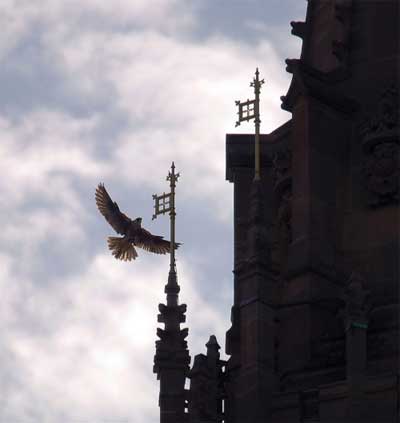 Highly territorial birds, peregrines will fiercely defend their patch from other birds. The average territory has a two to three-mile radius, and will often be near the Thames and include buildings with peregrine-friendly ledges. Steel and glass aren't ideal for the birds: apparently Canary Wharf would love to attract some, but Dave says the building would be a fledgling nightmare. He knows, however, that peregrines do like to sit on the nearby and well-lit Barclay's sign in winter, no doubt because it's rather warm.
Highly territorial birds, peregrines will fiercely defend their patch from other birds. The average territory has a two to three-mile radius, and will often be near the Thames and include buildings with peregrine-friendly ledges. Steel and glass aren't ideal for the birds: apparently Canary Wharf would love to attract some, but Dave says the building would be a fledgling nightmare. He knows, however, that peregrines do like to sit on the nearby and well-lit Barclay's sign in winter, no doubt because it's rather warm.
At 7.30am I find myself on a sewage farm. Despite the stench, the place is carpeted in wildflowers and there are rabbits skipping about everywhere. Down by the river edge, thick mud gleams in the early sun, burning silver and turning the hundreds of water birds into dark but shapely shadows. There are oystercatchers, cormorants, common terns, plus many swans and gulls... and a family of peregrines.
This is one of Dave's favourite spots. Somehow immune to the ripe smell, he glows as he tells me some peregrine chicks have just hatched in a large bird box of his making. We watch the adult male guarding the box while the female incubates her young. Safe at the top of the London food chain, peregrines do still get harassed by crows: Dave says one of his most memorable moments was witnessing this particular peregrine couple see off a gang of 24 of them.
So what does the future hold for London's peregrines? Those that call the capital home are London born-and-bred; the urban landscape is their natural home and the only one they know. Dave thinks his efforts and those of other people to protect and encourage the birds could see many more pairs breeding in the city.
Helen Babbs is a freelance journalist
Further info:
http://www.londonperegrines.com
| READ MORE... | |
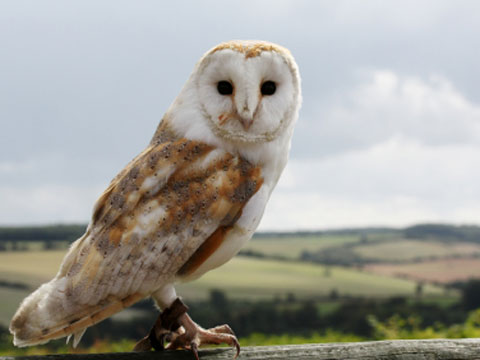 |
HOW TO MAKE A DIFFERENCE How to get involved in wildlife conservation From joining campaigns groups to making your garden more wildlife friendly, there are many ways to get involved with saving the natural world. Read on for inspiration... |
 |
HOW TO MAKE A DIFFERENCE 10 groups campaigning for the natural world Breathable air, healthy soil, fresh water and the stability of our climate all rely on our planetary life-support systems – like rainforests and oceans – being healthy. |
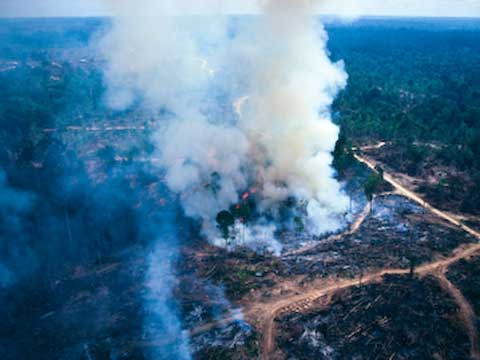 |
HOW TO MAKE A DIFFERENCE Ecocide: making environmental destruction a criminal offence Lawyer Polly Higgins is spearheading a campaign to have 'ecocide' recognised by the UN as an international crime against peace. But how will this work in practice? |
 |
HOW TO MAKE A DIFFERENCE The Thin Green Line: park rangers risking their lives After 10 years as a park ranger, Sean Willmore packed up his life and took to the road to record the experiences of his fellow rangers around the globe. The result is a revealing and inspiring documentary |
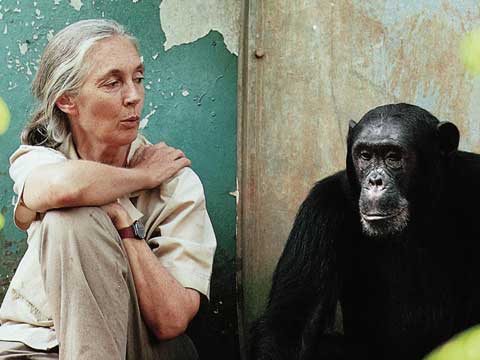 |
INTERVIEW Dr. Jane Goodall: I'm not going to fight for animal rights The renowned primatologist and conservationist on the need for scientific empathy, the impact of economic development, and why children give her hope for the future |



